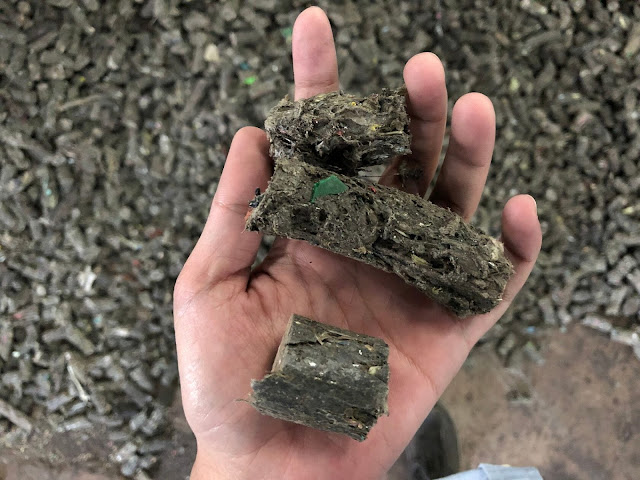 |
| Refuse-Derived Fuel |
In today's modern society, waste management has become a pressing concern. As the population continues to grow and consumerism rises, the amount of waste generated is reaching alarming levels. Landfills are filling up rapidly, and traditional waste disposal methods are no longer sufficient. This is where refuse-derived fuel (RDF) comes into the picture. RDF offers a sustainable solution to the mounting waste problem while also addressing the increasing demand for energy.
Refuse-derived
fuel is a type of solid fuel derived from non-recyclable waste materials. These
materials include household waste, commercial waste, industrial waste, and
construction and demolition debris. RDF production involves a series of
mechanical and biological processes that transform waste into a valuable energy
resource.
The
first step in refuse-derived fuel production is sorting and separation. The
waste is carefully inspected to remove recyclable materials such as plastics,
metals, and glass. These materials can be recycled separately, reducing the
burden on landfills and conserving resources. Once the recyclable materials are
extracted, the remaining waste is processed further.
Shredding
and screening are the next stages in refuse-derived fuel production. The waste
is shredded into smaller pieces to increase its surface area, making it easier
to handle and burn. After shredding, the waste is screened to remove any
remaining contaminants or oversized materials. This ensures that the final RDF
product meets the desired specifications.
Once
the waste has been sorted, shredded, and screened, it undergoes a drying
process. Moisture content in the waste can significantly affect the quality and
efficiency of refuse-derived fuel. Drying reduces the moisture content to an
optimal level, enhancing the calorific value and combustion properties of the
fuel. After drying, the waste is compacted into dense pellets or briquettes.
These compacted forms increase the energy density of the fuel, making it easier
to store, transport, and handle. The final RDF product is then ready for
utilization.
One
of the primary advantages of refuse-derived fuel is its potential as an
alternative fuel source. RDF can be co-fired with traditional fossil fuels in
industrial boilers, cement kilns, and power plants. By substituting a portion
of coal or other fossil fuels with refuse-derived fuel, the reliance on
non-renewable energy sources can be reduced. This helps to mitigate greenhouse
gas emissions and combat climate change.
Furthermore,
refuse-derived fuel offers a viable solution for waste-to-energy conversion. By
harnessing the energy content of non-recyclable waste, refuse-derived fuel
facilities can generate electricity and heat. This not only contributes to the
renewable energy mix but also provides a sustainable and reliable energy
source. In regions with limited access to conventional energy resources,
refuse-derived fuel can play a crucial role in meeting the energy demand.
Another
significant advantage of refuse-derived fuel is its ability to divert waste
from landfills. As land becomes scarce and environmental concerns mount,
reducing the amount of waste sent to landfills is essential. RDF production
promotes the concept of the waste hierarchy, prioritizing waste prevention,
recycling, and recovery over disposal. By extracting value from non-recyclable
waste, RDF minimizes the need for landfilling and promotes a circular economy.
Refuse-Derived
Fuel also has economic benefits. The waste
management industry can profit from RDF production by selling the fuel to
industries that require an alternative energy source. Additionally, RDF
facilities create job opportunities in waste sorting, processing, and plant
operations. These economic benefits contribute to the overall growth and
sustainability of the waste management sector.
However,
it is important to address some of the challenges associated with
refuse-derived fuel. The quality of refuse-derived fuel is crucial for its
successful utilization. Contaminants, such as hazardous materials and
non-combustible waste, must be carefully controlled to avoid adverse effects on
combustion efficiency and emissions. Strict quality control measures and
regulations are necessary to ensure the safe and efficient use of
refuse-derived fuel.
Public
perception and acceptance of refuse-derived fuel can also pose a challenge.
Some people may have concerns about the environmental and health impacts of
burning waste. Proper education and communication are essential to dispel
misconceptions and promote the advantages of refuse-derived fuel in waste
management and renewable energy generation.
Comments
Post a Comment